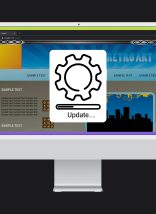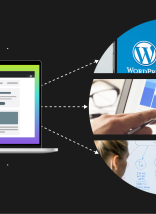
When Ashley Verrill and the team at Software Advice shared their fascinating “Social Service” study, I asked if we could post their results on our blog. They upped my offer by suggesting a guest blog post sharing Dos and Don’ts learned during their Twitter customer service study. The study asked major brands such as McDonald’s, Starbucks and Apple for help via Twitter.
Twitter is a proxy for social media here. We are confident that Ashley and her team’s results are accurate to the state of customer service via social media. The Social Customer Service Race Study results were surprising, shocking and a clear indication that “Social Customer Service”, meaning using social media to connect with customers, has a long way to go. The first brands and companies to embrace using social media marketing for customer service will win big, as the MasterCard team showed in this excellent study, and as Zappos proves daily. Here is Ashley Verrill’s guest blog post for Atlantic BT:

Ashley Verrill, Software Advice
Customer Service Support via Twitter Study
Once viewed exclusively as a marketing tool, social media is emerging as a popular channel for customer service. Whether you know it or not, instant-gratification customers are looking for support from your company or brand via Twitter, Facebook, and other social networks.
Are brands and companies paying attention on social media?
This question and the growing importance of an active social presence prompted our recent four-week research project. “The Great Social Customer Service Study Race” analyzed 14 top brands such as McDonald’s and Starbucks for customer service responsiveness on Twitter. The study revealed interesting customer service and social media strengths and weaknesses. This post shares a list of dos and don’ts for customer service via social media.
The Great Social Customer Service Race Study
Four Software Advice team members used personal Twitter accounts to send customer service tweets to 14 leading consumer brands in seven industries. Each company received one tweet per weekday for four consecutive weeks. Tweets used the @ symbol with the company’s Twitter account half of the time; the other half of the study’s tweets mentioned the company or brand by name. Use of @TwitterName triggers a notification to a Twitter account holder they were mentioned in a tweet. Using a company or brand name isn’t automatically shared.
Tweeted questions fell into five categories:
- Urgent.
- Positive.
- Negative.
- FAQ (Frequently Asked Questions).
- Technical.
Social Service Do: Use a Placeholder If Response Delayed
Several times during the Social Customer Service Race Study companies took several days to respond to a tweet. This lag between tweets seeking connection and company response is a huge misstep. Many consumers expect a response in two hours, according to a recent Oracle Study.
One helpful strategy we discovered was requiring agents to post a placeholder response if a question required escalation or a management reroute. Some immediate recognition is a good idea.
Example of a Social Service Placeholder Tweet:
“Thanks for your tweet @customername! We are looking into [topic] now and will be back to you by [date].”
Social Service Do: Leverage Customer Service Tweets for Marketing
MasterCard was the clear winner in our credit card group. Mastercard posted better-than-average response times, and they capitalized on opportunities to add marketing and sales to a customer service interaction.
When one of our test tweets asked if MasterCard is accepted globally, the MasterCard Social Service Team responded AND Re-Tweeted our message. This shows MasterCard’s 30,600 followers Mastercard listens and responds. The MasterCard Social Service Team used another tweet focused to customer service to proactively pitch a related product.
Social Service Don’t: Never Be Lazy, Solve the Problem, Create WOW
In one interaction with McDonald’s, the Social Service agent didn’t provide a good answer to the tweeted problem. The response didn’t make it clear she was with the world’s largest fast food chain. The test Tweet asked about placing a regular weekly order for a business. The McDonald’s Social Service Agent’s reply said we should contact our local store.
The McDonald’s Social Service Team missed a chance to use social media to WOW. Sharing the number of the nearest McDonald’s or calling them for us could create WOW customer service worthy of a social share. Companies shouldn’t be lazy or overly canned in social media interactions. Look for chances to WOW, and build WOW into social media support systems.
Social Service Don’t: Respond to Negative Sentiment Before Storm
Most “listening software” or Online Reputation Management (ORM) tools such as Radian6 or Google Alerts can be customized. Business rules and filters can move social communication with certain keywords to the front of the line. During our Social Customer Service Race, it was clear that some brands prioritize “thank you” messages. One company responded in about 13 minutes to a “thank you” tweet.
Messages with important sentiment words or phrases such as “mad,” “help,” and “thinking of switching” went unnoticed.
.
Companies should program software to prioritize messages with important emotional words. Negative words and feelings can go viral if a frustrated customer doesn’t feel heard, recognized and corresponded with. Small storms can brew into difficult to counter negative reviews on Google Reviews or Yelp.
Confused and angry customers do many things; advocacy and conversion are rare. The best way to quiet a negative review or blog post is to take proactive steps so negative PR storms don’t happen. Stopping a storm before it becomes viral and powerful is our best advice. Tuning systems to recognize negative sentiment prompting immediate response is the best tactic.
Social Service Do: Listen for Your Brand, Product and Company Names, @ or No @
Less than 8 percent of responses during the Social Service Race came when we didn’t use the @[TweetName]. Companies and brands must listen to social media for positive or negative mentions. Just because the customer doesn’t address your company specifically, doesn’t mean you shouldn’t respond. Consider this example:
Each team member in the Social Customer Service Race Tweeted this message:
“I’m thinking of buying a new laptop today. It’s Macbook vs. HP? What do you think?”
Both brands missed this high purchase-intent tweet on four occasions.
Your listening software should alert for mentions with the @ and mentions of important brand names and keywords. Mine social media for intent and sentiment to generate return. Those questioning social media Return On Investment (ROI) should read our study carefully. Perhaps ROI is more related to how social media is being used.
Summary – Time for a Change in Social Strategy
Brands responded to a mere 14% of the 280 tweets sent during the Social Customer Service Race.
Social Customer Service remains a new concept for most brands. Brands did not meet minimum customer expectations on Twitter during the Social Customer Service Race Study. We hope our social media customer service Dos and Don’ts help Social Customer Service Teams respond better in the next race.
About Ashley Verrill
Ashley Verrill is a market analyst with Software Advice. She spent the last six years reporting and writing business news and strategy features. Ashley’s writing has appeared in Inc., Upstart Business Journal, the Austin Business Journal and the North Bay Business Journal. Ashley is a University of Texas graduate with a bachelor’s degree in journalism..









